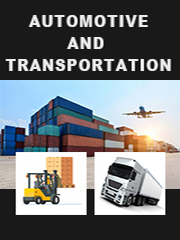TOP CATEGORY: Chemicals & Materials | Life Sciences | Banking & Finance | ICT Media

Download Report PDF Instantly
Report overview
The global Automotive Antifreeze and Coolant market was valued at US$ 7895 million in 2022 and is projected to reach US$ 9814.7 million by 2029, at a CAGR of 3.2% during the forecast period. The influence of COVID-19 and the Russia-Ukraine War were considered while estimating market sizes.
An antifreeze is an additive, which lowers the freezing point of a water-based liquid. An antifreeze mixture is used to achieve freezing-point depression for cold environments. Common antifreezes increase the boiling point of the liquid, allowing higher coolant temperature. A coolant is a substance, typically liquid or gas, which used to reduce or regulate the temperature of a system.
This report aims to provide a comprehensive presentation of the global market for Automotive Antifreeze and Coolant, with both quantitative and qualitative analysis, to help readers develop business/growth strategies, assess the market competitive situation, analyze their position in the current marketplace, and make informed business decisions regarding Automotive Antifreeze and Coolant. This report contains market size and forecasts of Automotive Antifreeze and Coolant in global, including the following market information:
Global Automotive Antifreeze and Coolant Market Revenue, 2018-2023, 2024-2029, ($ millions)
Global Automotive Antifreeze and Coolant Market Sales, 2018-2023, 2024-2029, (K MT)
Global top five Automotive Antifreeze and Coolant companies in 2022 (%)
By region, Asia-Pacific accounted for the highest share of consumption in 2019, at more than 34 percent. The leading producers in the industry are Prestone, Shell and ExxonMobil, accounting for 12.34%, 11.80% and 7.81% of revenues respectively.
We surveyed the Automotive Antifreeze and Coolant manufacturers, suppliers, distributors and industry experts on this industry, involving the sales, revenue, demand, price change, product type, recent development and plan, industry trends, drivers, challenges, obstacles, and potential risks.
Total Market by Segment:
Global Automotive Antifreeze and Coolant Market, by Type, 2018-2023, 2024-2029 ($ Millions) & (K MT)
Global Automotive Antifreeze and Coolant Market Segment Percentages, by Type, 2022 (%)
Global Automotive Antifreeze and Coolant Market, by Application, 2018-2023, 2024-2029 ($ Millions) & (K MT)
Global Automotive Antifreeze and Coolant Market Segment Percentages, by Application, 2022 (%)
Global Automotive Antifreeze and Coolant Market, By Region and Country, 2018-2023, 2024-2029 ($ Millions) & (K MT)
Global Automotive Antifreeze and Coolant Market Segment Percentages, By Region and Country, 2022 (%)
Competitor Analysis
The report also provides analysis of leading market participants including:
Further, the report presents profiles of competitors in the market, key players include:
Outline of Major Chapters:
Chapter 1: Introduces the definition of Automotive Antifreeze and Coolant, market overview.
Chapter 2: Global Automotive Antifreeze and Coolant market size in revenue and volume.
Chapter 3: Detailed analysis of Automotive Antifreeze and Coolant manufacturers competitive landscape, price, sales and revenue market share, latest development plan, merger, and acquisition information, etc.
Chapter 4: Provides the analysis of various market segments by type, covering the market size and development potential of each market segment, to help readers find the blue ocean market in different market segments.
Chapter 5: Provides the analysis of various market segments by application, covering the market size and development potential of each market segment, to help readers find the blue ocean market in different downstream markets.
Chapter 6: Sales of Automotive Antifreeze and Coolant in regional level and country level. It provides a quantitative analysis of the market size and development potential of each region and its main countries and introduces the market development, future development prospects, market space of each country in the world.
Chapter 7: Provides profiles of key players, introducing the basic situation of the main companies in the market in detail, including product sales, revenue, price, gross margin, product introduction, recent development, etc.
Chapter 8: Global Automotive Antifreeze and Coolant capacity by region & country.
Chapter 9: Introduces the market dynamics, latest developments of the market, the driving factors and restrictive factors of the market, the challenges and risks faced by manufacturers in the industry, and the analysis of relevant policies in the industry.
Chapter 10: Analysis of industrial chain, including the upstream and downstream of the industry.
Chapter 11: The main points and conclusions of the report.